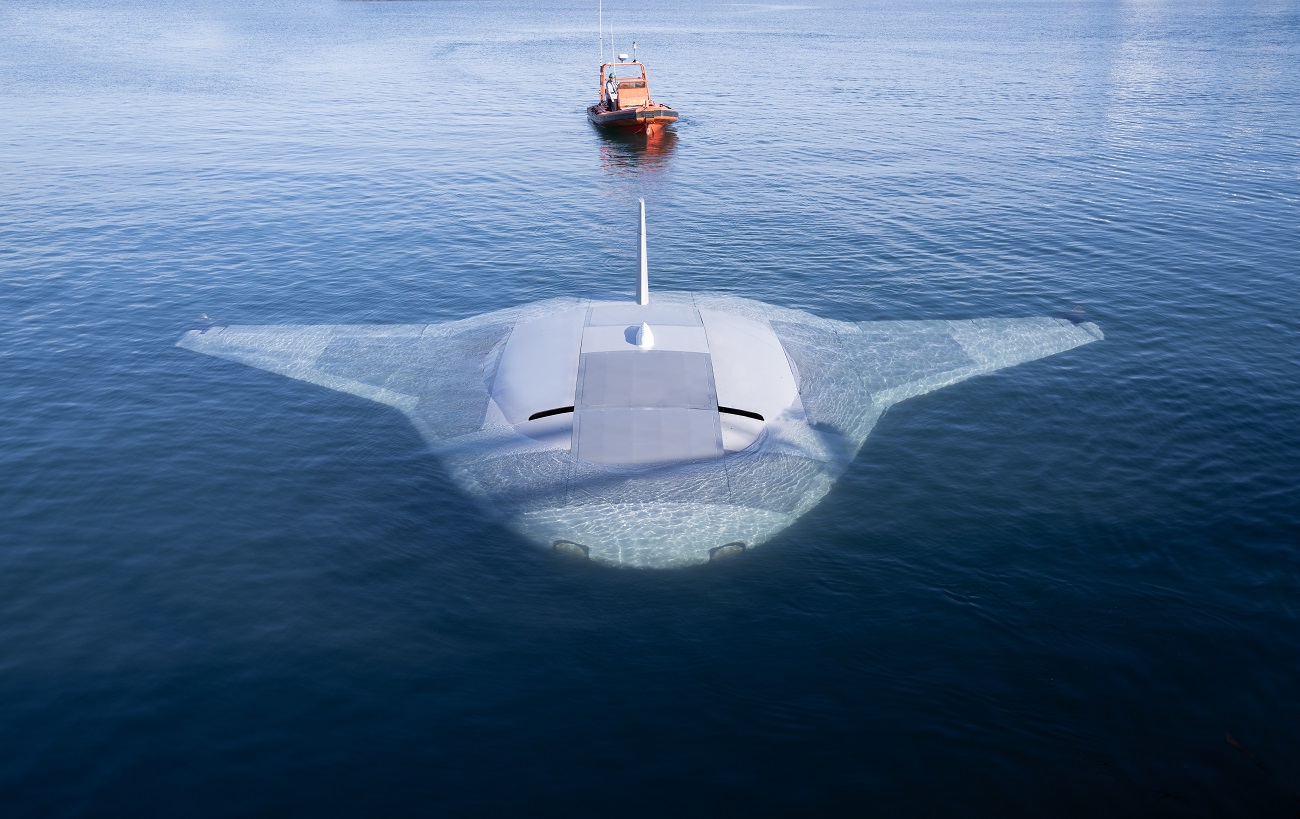The Manta Ray prototype uncrewed underwater vehicle (UUV) built by performer Northrop Grumman completed full-scale, in-water testing off the coast of Southern California in February and March 2024. Testing demonstrated at-sea hydrodynamic performance, including submerged operations using all the vehicle’s modes of propulsion and steering: buoyancy, propellers, and control surfaces. Northrop Grumman shipped the Manta Ray prototype in subsections from the build location in Maryland to its test location in California. The demonstrated ease of shipping and assembly supports the possibility of rapid deployment throughout the world without crowding valuable pier space at naval facilities.
“Our successful, full-scale Manta Ray testing validates the vehicle’s readiness to advance toward real-world operations after being rapidly assembled in the field from modular subsections. The combination of cross-country modular transportation, in-field assembly, and subsequent deployment demonstrates a first-of-kind capability for an extra-large UUV. Shipping the vehicle directly to its intended area of operation conserves energy that the vehicle would otherwise expend during transit. Once deployed, the vehicle uses efficient, buoyancy-driven gliding to move through the water. The craft is designed with several payload bays of multiple sizes and types to enable a wide variety of naval mission sets.”,” said Dr. Kyle Woerner, DARPA program manager for Manta Ray.

Manta Ray aims to develop and demonstrate a new class of long-duration, long-range, payload-capable UUVs ready for persistent operations in dynamic maritime environments. DARPA is engaging with the U.S. Navy on the next steps for testing and transition of this technology. A second Manta Ray performer, PacMar Technologies, is continuing testing of its full-scale energy harvesting system in 2024. The Manta Ray program seeks to demonstrate critical technologies for a new class of long duration, long range, payload-capable UUVs. If successful, this new class of UUV will give the combatant commander an amplification of capacity without disrupting current operations by remaining independent of manned vessels and ports once deployed.
Unmanned undersea vehicles (UUVs) that operate for extended durations without the need for human-present logistic support or maintenance offer the potential for persistent operations in forward environments. Such systems could allow traditional host vessels increased freedom of operational flexibility while providing traditional servicing ports with relief of workload. Manta Ray is a multi-phase effort that includes at-sea demonstration of critical technologies. New approaches to mitigate biofouling, corrosion, and other material degradation for long duration missions. The program is using a disciplined systems engineering approach to define demonstration system objectives and identify enabling technologies needed for future systems.












